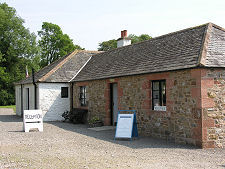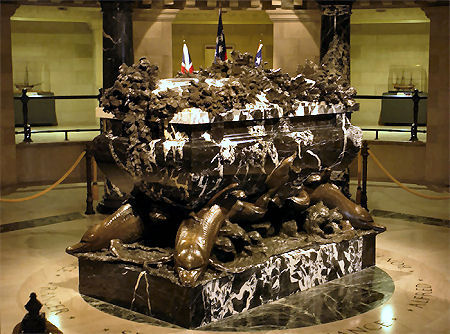| This Week’s Topic… | |||||

Best viewed in
|
John Paul Jones
At the age of 21 John Paul found himself acting skipper of the brig John when both the captain and first mate died of yellow fever. The ship's Scottish owners appointed him captain on a permanent basis and awarded him a 10% share of any cargoes carried. But on his second voyage in command, a sailor died after being flogged by John Paul, leaving him facing charges of murder. These he faced down, but after he killed another man during an alleged mutiny attempt in 1773, concerns about his treatment of his sailors increased. These he evaded by changing his name to John Paul Jones and moving to Virginia to take over the estate of his brother who had recently died. In 1775 John Paul Jones volunteered his services to the newly forming Continental Navy, which later became the United States Navy. He was well enough known despite his change of name for his experience to be recognized, and on 22 December was the first 1st Lieutenant to be appointed in the Continental Navy. His first vessel was the 30 gun 300 crew USS Alfred and it was on his maiden voyage that he was the first person to raise the American flag over an American Naval vessel: this was the Continental or Grand Union Flag, shown left. Jones proved a highly effective naval commander in the growing hostilities against the British government in the War of Independence. He first disrupted freight traffic along the coast of Nova Scotia, then in the Great Lakes. At the end of 1777 Jones went to France on board the USS Ranger, with a view to taking command of a large vessel under construction in Amsterdam. On 6 February 1778 France joined the war on the side of the USA, and Jones began to operate against Britain from the port of Brest, still with the USS Ranger. During this period Jones revisited some old haunts, attacking the port of Whitehaven. He then tried to capture for ransom the Earl of Selkirk, who had been among those pressing charges of murder against him as John Paul. The Earl was not at home, and Jones' obviously personal motives led to mutiny among his crew. This was all forgotten, however, when Jones captured HMS Drake, at anchor in Carrickfergus harbor and returned with her to France. The capture by USS Ranger of HMS Drake was the American Navy’s most significant military victory until then, and Jones' raids, though achieving little in material terms, caused huge alarm in Britain. On 23 September 1779, Jones was commanding the 42 gun Bonhomme Richard, which was sailing with four other US ships off Flamborough Head, in Yorkshire. Here they encountered and engaged a convoy of merchant vessels guarded by two Royal Navy ships. The Bonhomme Richard was engaged and severely damaged by the rather larger HMS Serapis. During the encounter, Jones' ship had the masts and the flag blown away and was clearly sinking, and the British captain is said to have asked whether the Bonhomme Richard was surrendering. John Paul Jones' reply, which has gone down in history, was “I have not yet begun to fight." Jones then rammed HMS Serapis and a boarding party captured her. The French responded by making him Chevalier John Paul Jones, and the Continental Congress produced a gold medal in his honor in 1787. In Britain he was regarded as a pirate.
|
||||

